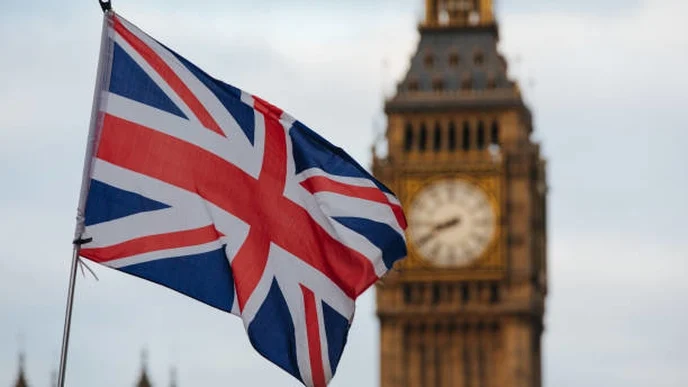The UK unemployment rate has risen to 4.6% in the three months to April 2025, marking its highest level since the summer of 2021, according to data released by the Office for National Statistics (ONS) on Tuesday. This uptick from 4.5% in the previous quarter signals a cooling labor market, driven by increased employer costs following tax hikes and a rise in the national living wage. The figures pose a challenge for Chancellor Rachel Reeves as she navigates economic growth ambitions ahead of the upcoming spending review.
The ONS reported that the jobless rate, based on its Labour Force Survey, increased to 4.6% in the three months to April, up from 4.5% in the prior period. This rise aligns with expectations but underscores a broader slowdown in the UK jobs market. Notably, the number of workers on company payrolls plummeted by 109,000 in May, the steepest monthly decline since the height of the Covid-19 pandemic. Job vacancies also fell by 63,000 over the three months to May, reflecting reduced hiring activity as businesses grapple with higher costs.
The data provides the first clear glimpse of the impact of Reeves’s £25 billion increase in employer National Insurance Contributions (NICs), which took effect in April, alongside a 6.7% hike in the national living wage. These measures, intended to bolster public finances, have raised labor costs for nearly 1 million businesses, prompting many to scale back hiring or cut jobs. “The further softening in employment in April suggests businesses continued to respond to the rise in business taxes and the minimum wage by reducing headcount,” said Ruth Gregory, deputy chief UK economist at Capital Economics.
While unemployment rose, wage growth has shown signs of cooling. Average regular earnings (excluding bonuses) grew by 5.6% in the first three months of 2025, down from previous levels and marking the slowest pace in 28 months. However, real wages, adjusted for inflation still rose by 2.6%, as inflation stood at 3.5% in April. This persistent wage growth, though slower, continues to outstrip inflation, raising concerns at the Bank of England about potential inflationary pressures.
Yael Selfin, chief economist at KPMG, noted that the rise in labor costs is likely to further dampen wage growth in the coming months. “The MPC [Monetary Policy Committee] is unlikely to vote for a cut next week, as it will likely require more evidence that wage growth is falling back to levels consistent with the inflation target,” Selfin said. The Bank of England, which has already cut interest rates four times to 4.25%, is closely monitoring the labor market for signs of weakness that could justify further reductions. Economists suggest another rate cut may come as early as August if inflationary pressures ease.
Related Articles:
- Breaking: CBN raises monetary policy rate to 27.50% amid economic challenges
- Bauchi Gov unveils ambitious N465bn 2025 budget amid economic challenges
- Council Boss pledges support for Teachers amid economic challenges
The rise in unemployment comes at a critical time for Chancellor Reeves, who has prioritized economic growth and job creation. The ONS data, described as a “blow” by some analysts, arrives just before Wednesday’s spending review, adding pressure to her fiscal strategy. Critics, including voices on X, have labeled the figures as evidence of economic mismanagement, with one user stating, “This isn’t ‘stability.’ It’s economic failure – and working people are paying the price.” Others have pointed to the tax hikes as a direct cause of job losses, with businesses freezing hiring to offset increased costs.
Despite the rise in unemployment, there are some positive signals. The rate of economic inactivity, working-age adults neither employed nor seeking work fell by 0.2 percentage points to 21.3%. This suggests some individuals are re-entering the labor market, though not enough to offset job losses. London, however, continues to face challenges, with the capital recording the highest regional jobless rate at 6.2%, representing 321,000 unemployed individuals.
The labor market’s struggles are set against a backdrop of broader economic uncertainty. Inflation rose to 3.5% in April, driven partly by higher household bills and the NICs increase, which some economists argue has fueled cost pressures for businesses. The Bank of England’s cautious approach to further rate cuts reflects concerns that strong wage growth could sustain inflation above its 2% target. Meanwhile, global factors, including US tariffs, are adding to economic headwinds, with some analysts linking these to weakened business confidence and reduced hiring.
The ONS has cautioned that its Labour Force Survey data is undergoing an overhaul, and economists have expressed doubts about its reliability. Nonetheless, the broader picture of a cooling jobs market is clear, with payroll declines, falling vacancies, and rising unemployment claims (+33,000 in May) pointing to structural challenges.
The latest figures have sparked debate about the government’s fiscal policies and their impact on employment. While Reeves has defended the NICs hike as necessary to balance the budget, business groups have warned of job losses and price increases. The International Monetary Fund recently upgraded the UK’s growth forecast but issued a warning about the risks of tariffs, which could further complicate the economic outlook.






